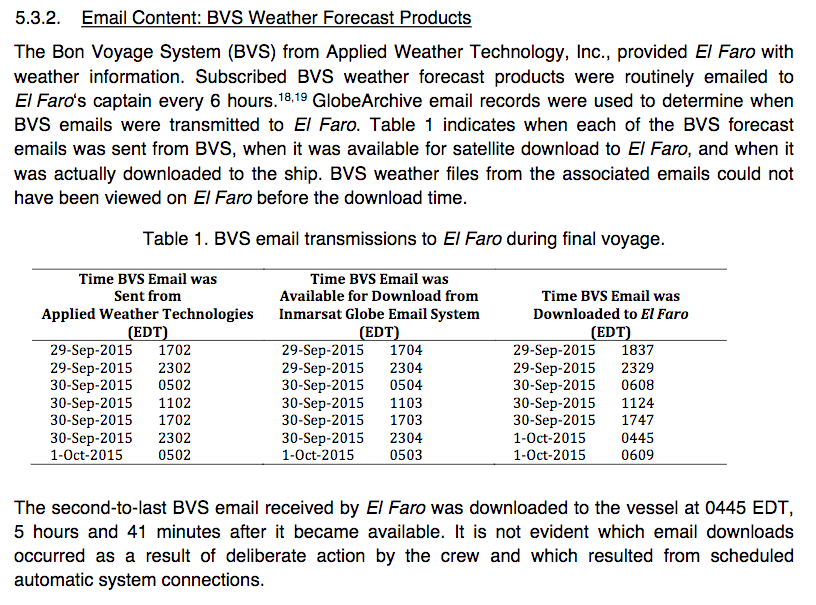[QUOTE=AHTS Master;195811]Did the ship have Direct TV with the Weather Channel ?[/QUOTE]
The crew mentions getting the Weather Channel, not if they had Direct TV or not.
With regards to the BVS, I don’t use that one but I use a similar program
This program itself can not be used for creating a voyage plan because it lacks the details needed for navigation, depths aids, TSS, the land masses are crudely drawn. Waypoints entered into the WX program, a departure time and a speed are entered, the speed can be rpm or kts.
When the weather data arrives the file gets loaded into the program, the info is in “layers”, surface winds, pressure, wave / swell height and direction, currents, fronts can be seen. When the program is advanced in time the ship icon can be seen advancing along the track-line and the expected weather can be read from a screen window. The ship’s speed is adjusted by the program according to the forecast conditons. For example if head winds or swell is encounted the speed of advance adjusts accordingly.
The time of arrival at each waypoint can be seen as can the ETA. The track can be adjusted by clicking and dragginig the waypoints with the mouse and the ETA can be seen changing. Also an optimum route can be found and so forth.
The program is far quicker, easier and more convenient than the paper wx charts, the current, 24 hr, 48 hr each on a different sheet. If the ship encounters a low pressure system the track can be adjusted around the desired max wave height contour. Or the parameters can be entered, max wind and wave heights and the program will create a track-line for you.
The program is far more precise then TV or NWS weather because it centred on the ship’s postion or expected future position. All the GMDSS equipment is still required but the information from traditional sources tends to get neglected unless the process used prior are kept in place.


